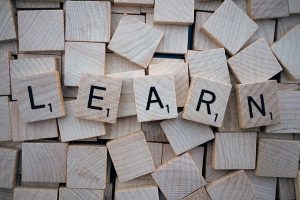Extra arts education boosts students’ writing scores — and their compassion, a big new study finds

How extra arts education can help improve the writing abilities of a student
For many decades now, fine art education has been key to an all rounded curriculum. Unfortunately, a lot of schools are relegating this important subject to the backseat. This is even though numerous studies have shown that art education can help to boost students writing abilities. On top of this, experts from custom writing reviews suggest that they get their writing inspiration from art. If you are still not convinced that this subject is beneficial, there are some ways to improve student’s learning.
Study on the importance of art on education
According to a study that was conducted in 2002 by the Arts education partnership, it was noted that students who had exposure to music, dance and drama are more proficient in Math, writing and reading. While many school districts may tend to look at this subject as a frivolous part of education, this report suggested otherwise.
They took into account 62 different studies done by 100 researchers in the areas of visual, dance and fine arts. This 2002 study was of its kind as it looked at the effect of art on the performance academically. Researchers used this to determine that students, who were able to get the physical education performed better on the standardised tests, enhanced their social skills and were more active as compared to the ones with limited access.
Even though the AEP researchers agreed that craft is not the cure for what is ailing the struggling schools, the study made researchers believe that it was a valuable tool that can be used by teachers to teach students of different ages. This is particularly the case for the students who are in poor communities or may need some remedial lessons.
In another study that was conducted by John Hopkins researchers, it was noted that education could help to rewire the brain in a good way. Even though the proponents of this education say that creative training can help to develop the skills and translate into the other areas of academic life, there is little research on the scientific component.
The different aspects of training in arts such as motor control, motivation and attention were studied by researchers who took part in the study and there were interesting results. In one study that took four years, it was noted that students who undertook music lessons had changes in their brains structure that helped them to transfer motor skills to other areas. Another one found that students were motivated to practice in a particular art form and spending time focusing on the art helped to make their network attention more efficient even in other areas of study such as writing.
How arts education can help improve a student’s writing ability
There are several ways in which art can help students in their studies. These include:
Growth mindset
Students can use it to develop different skills such as grit, resilience and a growth mindset that can help them to master their writing craft. This can also help them to improve academically and even in life.
In most cases, this progression usually happens naturally but in some instances can be nurtured by the teacher. The instructor can set some clear goals and expectations before drawing a correlation between the work to be done and the results. It may help the student to change their motivations and get a healthier and more sustainable environment for learning.
For a child to grow and also progress, there is a need for intrinsic motivation. During the early stages of learning a particular craft, learners will engage in it as they will find it fun. But this motivation will only enable them to progress before there is a slowdown in their development. This is where extrinsic motivation enables students to continue growing. This is often in the form of tests, auditions and other assessments. Just like the intrinsic motivation, this engagement helps students to progress and also grow. Even though the two different kinds of motivations are productive and helpful, using a hybrid of the two will produce better results. It will become possible for the students to practice and study for satisfaction rather than for external rewards.
Improved cognition
Some studies connect the learning of music to enhanced verbal memory, the pronunciation of the second language, reading ability and other great functions. When students get immersed in arts education, they get drawn into a great complex as well as different disciplines combining various subject matters.
For instance, for a student to play in tune, they need to have a scientific understanding of different musical acoustic principles and sound waves. In the same breadth, for a student to do an inspired Shakespeare performance, they must understand cultural, social and historical events of the period. This means that the art is beneficial not only on its own but it is also the perfect link of the different subject matter.
Communication
There is no doubt that communication is one of the most beneficial aspects of life. We build a relationship through communication. By studying a particular craft, learners can get a wide range of communication skills. By being part of a musical ensemble, learners should be able to learn physically, verbally and emotionally with peers, audiences and conductor. In the same way, a cast member is supposed to communicate the spoken words to the audience but also the script’s underlying emotions. The crafts are an expression method that can transform emotions and thoughts into unique methods of communication.
Deepening of cultural and self-understanding
Even though a lot of people can find value in a certain craft education and how it influences learners, taking time to study it is a worthwhile endeavour. It is not possible to have the arts without culture. It means that art is a key part of our identity. Therefore, one of the best things we can do to students is to give them an opportunity to study the subject.






